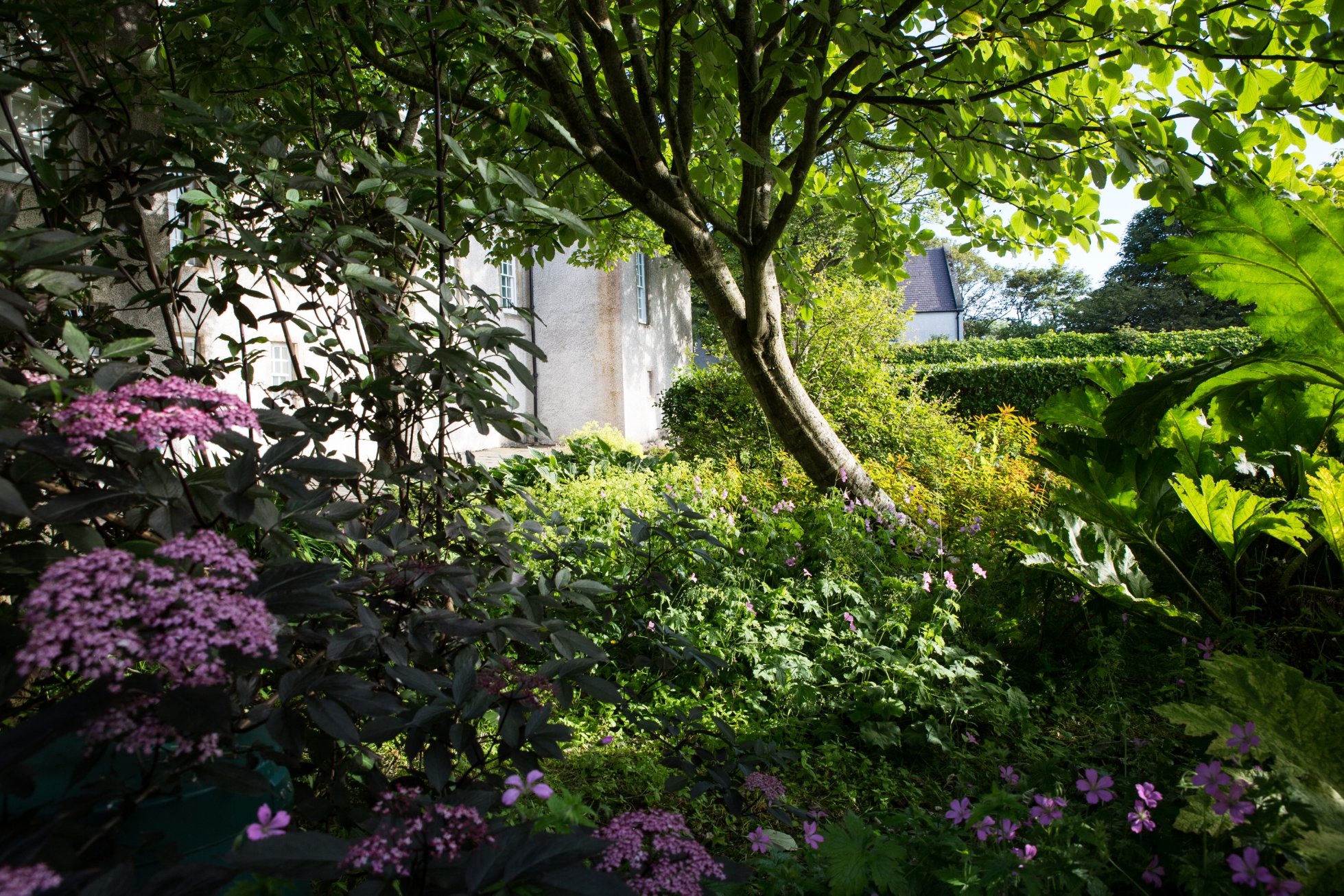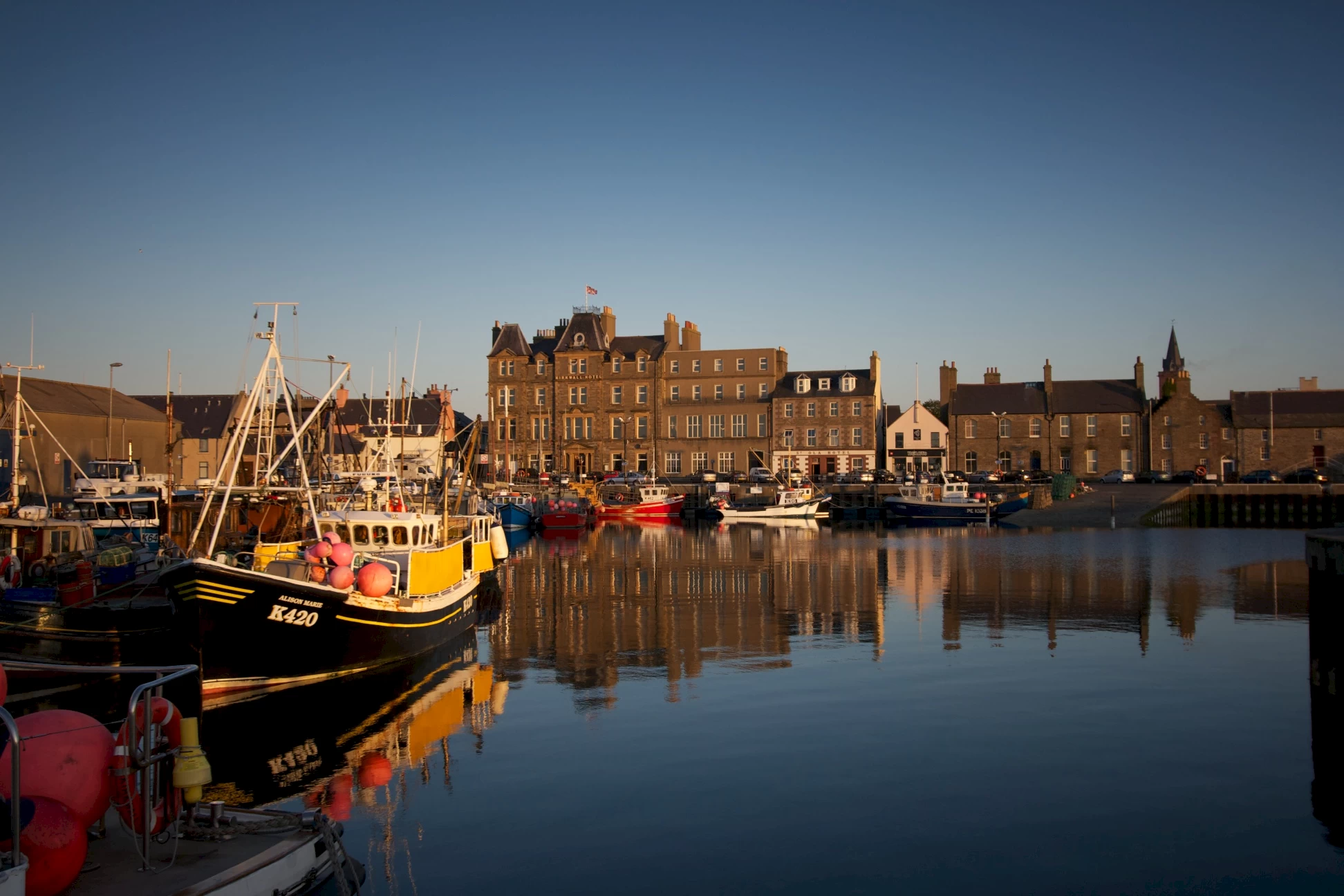Discover Secret Orkney
In our last blog we wrote about some of the best-known sites in Kirkwall. We suggested how you could get a glimpse of what makes Orkney special in just a day, without leaving the town centre. Now we’re going to take you round some of the lesser-known spots of the town. You might call it secret Kirkwall.
Let’s start again with St Magnus Cathedral, but not inside this time. Rather, take a stroll through the peaceful, tree-lined graveyard surrounding it. The atmosphere is not at all gloomy: with the warm red and yellow walls of the cathedral soaring above on one side, and tall, bird-filled trees on the other, it’s an oasis of calm in the busy town centre. Look out for headstones commemorating famous Orcadians like Arctic explorer John Rae, and also for the resting places of less-fortunate folk in their paupers’ graves.
Tankerness House Gardens, image credit: Orkney.com
Opposite the cathedral, go down the lane at the side of the museum and turn through the stone gate on your right. You’ll find yourself in the beautifully laid-out gardens of Tankerness House. A perfect spot for an ice cream on a sunny day! (And very conveniently, there’s an ice cream shop at the top of the lane: The Daily Scoop.)
While in the gardens, have a look at the peculiar small building with its tall pointed roof that looks like a wizard’s hat. This is the Groatie Hoose, built as a glorified garden shed by a former provost of Kirkwall. It was constructed from volcanic rock, previously used as ballast in a sailing ship called the Revenge. The Revenge was the ship captained by Orkney most famous – possibly only – pirate, John Gow. In 1725, after a short and not very successful career as a buccaneer in the tropics, Gow sailed north to his home islands. After a couple of foolhardy raids, he ran aground on Eday, was captured. and taken to the Tower of London. There he met the fate of all pirates!
Walk up the slope of Palace Road a little, and after a hundred metres you’ll come to Orkney’s own Watergate. Nothing to do with President Nixon, this street – ‘or gate’ in old Norse –makes an ideal vantage point for getting some stunning photos of St Magnus Cathedral and its majestic rose window.
Watergate, image credit: Monika V. on Yelp
Cross Palace Road and wander along the narrow path called Copland’s Lane. This takes you out at the top of one of Kirkwall’s ancient throughfares, The Strynd. During World War Two, the thick walls of The Strynd provided ideal protection: it was roofed over and used as an air-raid shelter. As you head down the lane, think of Ola, five or six years old, running for safety here from her home above her parents’ shop in Broad Street.
That shop is still the home of Ola Gorie Jewellery – you‘ll see us ahead and to your left as you emerge from The Strynd onto Broad Street. Please come in and say hello! As well as our jewellery shop at 7 to 9 Broad Street, we have a clothes boutique at 13 to 15 Broad Street, and a cheese, wine and whisky shop, Kirkness & Gorie, in the courtyard at 11 Broad Street.
Kirkwall Harbour, image credit: orkney.com
After a good look around there, head down Albert Street towards the harbour, exploring some of the narrow lanes and closes you pass. This layout reveals the medieval origins of the town, even though most of the buildings are overlays from the prosperous Victorian age.
Keep an eye out for blue plaques on various walls, indicating where noted individuals from Orkney’s past lived, such as Laing family, at number 57, who included historians, translators and politicians. The defeat of Samuel Laing in the election of 1832 was so controversial that riots ensured, resulting in the death of one protestor! Such controversies are unlikely now, as we have had a solid run of Liberal and Liberal Democrat MPs since 1950.
For Orkney, 73 years of the same politics is a very short time. Further along Albert Street, just where it turns a dog-leg and becomes Bridge Street, you will see another blue plaque, this one noting the site of Parliament Close. King James V held a parliament here in 1540, but the site was, historians think, an important site for centuries before that. It’s believed that the Norse rulers of Orkney held their ‘althing’ or parliament here from the 12th century onwards.
So there you go: 900 years of secret Kirkwall in a single day!




